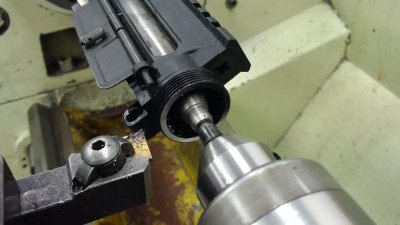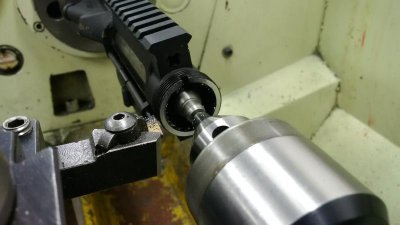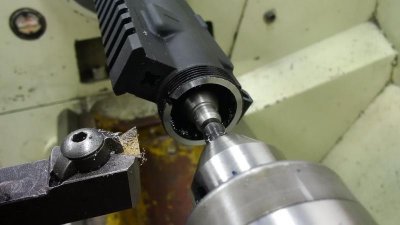I'm slowly setting out to build a precision AR. Before I start hanging parts on it, I want to be sure the face of my upper is square with its bore. I know you can buy a tool from Brownells to lap the face, but I've also got access to a lathe. I could pretty easily make a tool like the Brownells one.
From what I've read to cut it on a lathe, you have to have a very tight fitting "rod" that goes through the upper and the two are somehow held in place (I've got some ideas on that already.) From there, just chuck up the rod and touch the front of the upper with a cutting tool.
I realize that jacking around with this requires a very light touch to not booger up the headspacing.
Any experience or suggestions would be greatly appreciated.
From what I've read to cut it on a lathe, you have to have a very tight fitting "rod" that goes through the upper and the two are somehow held in place (I've got some ideas on that already.) From there, just chuck up the rod and touch the front of the upper with a cutting tool.
I realize that jacking around with this requires a very light touch to not booger up the headspacing.
Any experience or suggestions would be greatly appreciated.









